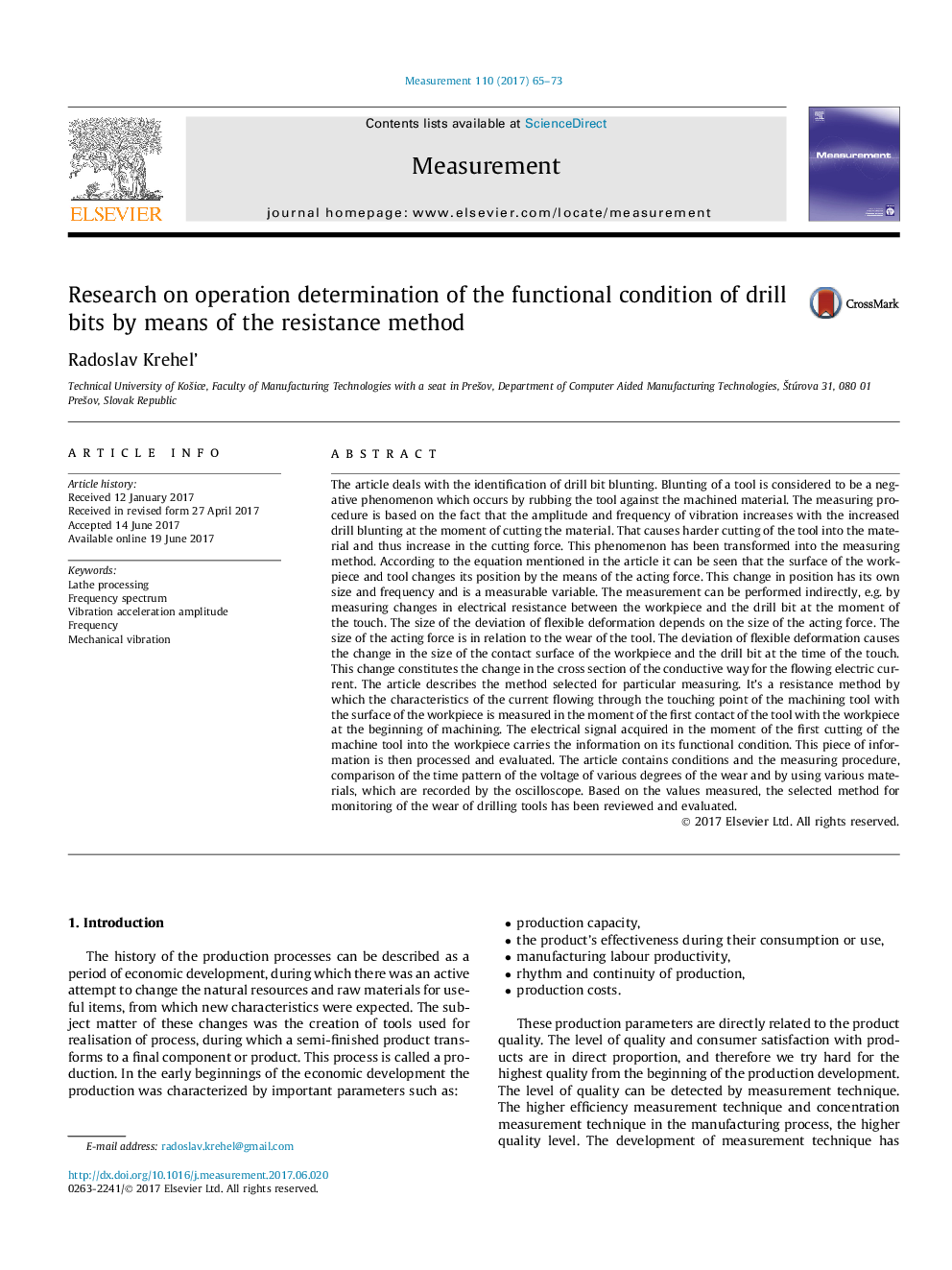| Article ID | Journal | Published Year | Pages | File Type |
|---|---|---|---|---|
| 5006447 | Measurement | 2017 | 9 Pages |
Abstract
The article deals with the identification of drill bit blunting. Blunting of a tool is considered to be a negative phenomenon which occurs by rubbing the tool against the machined material. The measuring procedure is based on the fact that the amplitude and frequency of vibration increases with the increased drill blunting at the moment of cutting the material. That causes harder cutting of the tool into the material and thus increase in the cutting force. This phenomenon has been transformed into the measuring method. According to the equation mentioned in the article it can be seen that the surface of the workpiece and tool changes its position by the means of the acting force. This change in position has its own size and frequency and is a measurable variable. The measurement can be performed indirectly, e.g. by measuring changes in electrical resistance between the workpiece and the drill bit at the moment of the touch. The size of the deviation of flexible deformation depends on the size of the acting force. The size of the acting force is in relation to the wear of the tool. The deviation of flexible deformation causes the change in the size of the contact surface of the workpiece and the drill bit at the time of the touch. This change constitutes the change in the cross section of the conductive way for the flowing electric current. The article describes the method selected for particular measuring. It's a resistance method by which the characteristics of the current flowing through the touching point of the machining tool with the surface of the workpiece is measured in the moment of the first contact of the tool with the workpiece at the beginning of machining. The electrical signal acquired in the moment of the first cutting of the machine tool into the workpiece carries the information on its functional condition. This piece of information is then processed and evaluated. The article contains conditions and the measuring procedure, comparison of the time pattern of the voltage of various degrees of the wear and by using various materials, which are recorded by the oscilloscope. Based on the values measured, the selected method for monitoring of the wear of drilling tools has been reviewed and evaluated.
Related Topics
Physical Sciences and Engineering
Engineering
Control and Systems Engineering
Authors
Radoslav Kreheľ,
